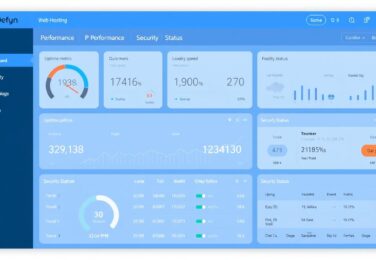How does Reverse Proxy work in Cloudflare and setting it up

Table of Content
Imagine you’re running Australia’s top online marketplace, with thousands visiting every day. As you enjoy your morning coffee, you see a huge spike in web traffic. This is exciting but also stressful, as it puts a lot of pressure on your servers.
Slow load times and security risks are real concerns. But, what if you could manage this traffic, speed up your site, and improve security? That’s where Cloudflare’s reverse proxy comes in.
In this article, we’ll explore how to set up a reverse proxy in Cloudflare. We’ll cover everything from creating a Cloudflare account to deploying a proxy server. You’ll learn how to boost your website’s performance and security.
Our journey starts with setting up a Cloudflare account, adding your domain, and configuring DNS settings. By following these steps, you’ll learn to optimise web traffic and enhance your business’s online presence. Let’s get started!
Key Takeaways
- Understanding the basics of reverse proxy and its role in Cloudflare setup
- Simple steps for Cloudflare account creation and adding your domain
- Essential configurations for DNS settings in reverse proxy deployment
- Optimising web traffic and boosting site security with a reverse proxy
- Benefits of Cloudflare’s network in managing web traffic and improving performance
Introduction to Reverse Proxy
In today’s digital world, keeping web services safe and efficient is key. A reverse proxy acts as a shield between the internet and backend servers. It brings big wins like better web server security, easier reverse proxy implementation, and more efficiency.
What is a Reverse Proxy?
A reverse proxy is a server that acts as a middleman. It sits between clients and backend servers. It takes requests from clients and sends them to the right backend server.
This way, the reverse proxy keeps the backend servers hidden from the internet. It makes them safer and cuts down on risks.
Benefits of Using a Reverse Proxy
Using a reverse proxy has many advantages:
- Security: It makes web server security stronger by hiding the backend servers.
- Distribution: It spreads out traffic to many servers, making web service scalability better.
- Anonymisation: It hides the identity of backend servers, protecting them more.
- Performance: It lightens the load on each server, making everything run smoother.

How Reverse Proxy Operates
A reverse proxy is a key server that helps manage network traffic handling and server requests. It’s important to understand how it works. This includes looking at web traffic flow and the differences between reverse and forward proxies.
Flow of Web Traffic
When a user wants to visit a website, the reverse proxy checks the incoming data. It blocks harmful requests and sends the right ones to the server. This helps distribute the load across multiple servers, preventing any one server from getting too busy.
Using a reverse proxy also adds security with SSL encryption. It makes data safer. Plus, it can cache content to make websites load faster.
Distinction Between Reverse Proxy and Forward Proxy
It’s important to know the difference between reverse and forward proxies. A reverse proxy sits in front of servers and handles client requests. On the other hand, a forward proxy acts as an intermediary for client requests to the internet.
Here are some key differences:
| Aspect | Reverse Proxy | Forward Proxy |
|---|---|---|
| Primary Function | Manages and directs incoming requests to backend servers. | Masks client identity and routes their requests to the internet. |
| Use Case | Load balancing, SSL termination, caching. | Access control, anonymity, content filtering. |
| Network Traffic Handling | Optimises traffic flow towards servers. | Optimises and filters the outgoing client requests. |
By using both reverse and forward proxies, organisations can better manage their server request management. This improves overall network traffic handling.
What is Cloudflare?
Cloudflare is a top web security company. It offers many services to make the internet safer and faster. It has a Content Delivery Network (CDN), DDoS protection, and DNS services. These help protect websites from cyber threats and make content load quickly.
Businesses can boost their website speed with Cloudflare. It uses a global network of data centres. These centres cache and distribute content, making it faster for users.
Cloudflare’s DDoS protection is very strong. It can handle big and complex attacks. This keeps businesses online and working, even when faced with lots of malicious traffic. It also has fast, secure, and reliable DNS services. These help direct user requests quickly and securely.
Cloudflare’s services mix better performance with strong security. It’s a key choice for businesses wanting to grow online. By using Cloudflare, companies can focus on innovation while it handles security and performance.
Advantages of Using Cloudflare
Cloudflare does more than just manage your website. It unlocks a range of benefits that boost your online presence. Let’s explore some key features that make Cloudflare a top choice for businesses. These features enhance website optimisation and security.
Web Traffic Management
Cloudflare excels in managing web traffic. It uses a global CDN to deliver content fast to users everywhere. This improves user experience and reduces delays.
Traffic analytics provide valuable insights. They help you understand how users interact with your site. This information guides better decisions and strategies.
Enhanced Security Layer
Cloudflare’s security features are a major advantage. It offers strong protection against threats like DDoS attacks and SQL injections. Your website stays safe, making users trust your brand more.
Improved Network Performance
Cloudflare optimises for speed and reliability. Its global CDN caches resources near users, cutting down load times. This leads to a smoother browsing experience and better SEO rankings.
These benefits combine to offer a better online experience. Cloudflare’s tools help businesses stay strong and efficient online. Whether it’s through analytics or security, Cloudflare empowers businesses.
| Feature | Benefit |
|---|---|
| Global CDN | Quicker content delivery and reduced latency |
| Security Features | Protection against cyber threats |
| Website Optimisation | Improved load times and SEO rankings |
| Traffic Analytics | Insightful data for informed decision-making |
Setting Up Reverse Proxy in Cloudflare
Setting up a Cloudflare reverse proxy is easy and important for your website’s security and performance. We’ll show you how to create an account, add your domain, set up DNS, and turn on the proxy. These steps are key to a successful Cloudflare setup.
Creating a Cloudflare Account
Start by creating a Cloudflare account. Go to Cloudflare’s website and sign up with your details. This first step is important because it lets you do all the other setup tasks.
Adding Your Domain to Cloudflare
After your account is set up, add your domain to Cloudflare. Log in to the Cloudflare dashboard and click Add Site. Type in your domain name and choose a plan. Cloudflare will check your DNS records for the next step.
Configuring DNS Settings
Configuring DNS is a critical part of setting up your reverse proxy. Go to the DNS tab in your Cloudflare dashboard. Here, you’ll see Cloudflare’s DNS records. Check these records for accuracy. If needed, add or edit records to ensure your domain works right.
Enabling Proxy Status
The last step is to activate proxy status for your DNS records. In the DNS tab, find the orange cloud icon next to each record. Click it to turn on proxy status. This secures your site and uses SSL encryption for safe data.
By following these steps, you’ll set up a Cloudflare reverse proxy. Your site will be more secure and perform better.
Load Balancing with Cloudflare
For any business dealing with lots of web traffic, keeping servers efficient and traffic smooth is key. Cloudflare load balancing helps by spreading traffic across many servers. This part explains how a load balancer works and how to set it up in Cloudflare.
Understanding Load Balancer
A load balancer is vital for spreading web and network traffic evenly across servers. This stops any one server from getting too much work. Setting up the load balancer right means traffic flows well and servers stay healthy.
Cloudflare’s load balancing boosts server performance by checking server health often. It finds and skips any servers that aren’t working right, sending traffic to working ones. This keeps your site running smoothly and fast.
Configuring Load Balancers in Cloudflare
Setting up Cloudflare load balancing is easy. Just follow this guide to get it done right:
- Login to Cloudflare Dashboard: Start by logging into your Cloudflare account.
- Navigate to Traffic: Go to the ‘Traffic’ tab in the Cloudflare dashboard.
- Create a Load Balancer: Click ‘Create Load Balancer’ and enter details like origin pools and failover settings.
- Configure Health Checks: Set up server health checks to keep an eye on server performance. This makes sure traffic goes to efficient servers.
- Set Traffic Steering: Decide how to distribute traffic (like by quality or location).
- Review and Deploy: Check your settings and turn on the load balancer.
| Step | Description |
|---|---|
| Login | Access your Cloudflare dashboard. |
| Navigate | Go to the ‘Traffic’ tab for load balancing settings. |
| Create Load Balancer | Input details for your load balancer like origin pools and failover settings. |
| Configure Health Checks | Set parameters for monitoring server health. |
| Set Traffic Steering | Determine how you want to direct your traffic. |
| Review and Deploy | Review settings and activate the load balancer. |
By following these steps, you’ll make your servers more efficient and keep traffic flowing well. Server health checks are key, letting traffic move smoothly even when servers are busy or down. This keeps your website running great.
Security Enhancements with Cloudflare’s Reverse Proxy
Cloudflare’s reverse proxy offers strong security measures. These features protect your websites and apps from threats. They also boost performance.
Web Application Firewall (WAF)
The Web Application Firewall is key in fighting cyber threats. Cloudflare’s WAF gives detailed control over web traffic. It scans for and blocks harmful activities like SQL injections and XSS attacks.
This approach blocks malicious requests early. It cuts down data breach and downtime risks. The WAF keeps getting updates to fight new threats.
SSL Termination
SSL termination is a vital part of Cloudflare’s security. It handles encrypted traffic well, easing your server’s workload. It decrypts SSL connections, checks for threats, and then re-encrypts the traffic.
This ensures data is sent securely and boosts server performance. It also helps with load balancing and traffic management.
Here’s a detailed comparison of the benefits brought by web application firewall and SSL termination:
| Security Feature | Primary Benefit | Operational Advantage |
|---|---|---|
| Web Application Firewall (WAF) | Mitigates cyber threats | Dynamic, real-time protection |
| SSL Termination | Manages encrypted traffic | Reduces server load, improves efficiency |
These Cloudflare security enhancements strengthen your website’s defences. They make a safer space for everyone. Using these features can greatly improve your cybersecurity.
Content Caching in Cloudflare
Content caching is key to Cloudflare’s fast performance. It uses advanced caching to store static content across its network. This cuts down server load and saves bandwidth, making browsing quick and smooth.
How Content Caching Works
When you visit a website, Cloudflare’s caching stores static files like images and scripts on edge servers worldwide. This means fewer requests to the main server, less server load, and better bandwidth use. Serving content from nearby servers also cuts down on wait times, making pages load faster.
Benefits of Content Caching
Cloudflare’s caching brings many benefits. Faster website loading times mean happier visitors and lower bounce rates. It also saves on backend resources, making it cost-effective for site owners. Overall, Cloudflare’s caching boosts speed and reliability, making your site better for everyone.
Monitoring and Analytics
In today’s digital world, it’s key for businesses to know how their online presence is doing. Cloudflare offers tools that give deep insights into traffic and performance. This helps users make smart decisions based on data.
Tracking Web Traffic
Knowing your web traffic is key to improving your site and reaching your goals. Cloudflare’s tools give detailed analytics on visitor numbers and how they use your site. This info is vital for spotting trends and making good choices.
Understanding HTTP Headers
HTTP headers analysis is a big part of web traffic insights. By looking at headers, we learn a lot about how clients and servers talk to each other. This info helps us see how fast your site loads and responds.
Understanding HTTP headers can also show us where to improve. This ensures your site works smoothly and efficiently.
| Metrics | Details |
|---|---|
| Traffic Volume | Tracks the number of visitors and page views |
| Response Time | Measures the time taken to load pages |
| HTTP Headers | Analyses server-client communication |
| Traffic Sources | Identifies where your visitors are coming from |
Common Issues and Troubleshooting
Setting up a reverse proxy in Cloudflare is usually easy. But, like any tech, it can have its problems. Knowing these can help you fix issues quickly.

Many users face reverse proxy issues. These can show up as DNS problems or firewall blocks. Fixing these common configuration errors fast is important.
Here are some common reverse proxy issues and how to solve them:
- DNS configuration mismatches: Make sure Cloudflare’s DNS records match your server’s IP.
- Firewall restrictions: Update your firewall to let Cloudflare’s IP ranges through.
- SSL errors: Check that your SSL certificates are set up right and are current.
- Caching issues: Clear Cloudflare’s cache if it’s serving old content.
Another problem area is common configuration errors that slow things down. For example, wrong SSL certificates can cause browser warnings or connection errors.
When dealing with Cloudflare problems, Cloudflare’s support is a big help. Their support guides cover many issues.
Here’s a quick guide to support solutions:
| Issue | Potential Solution |
|---|---|
| Slow performance | Check and optimise DNS settings, and consider using Argo Smart Routing. |
| SSL/TLS errors | Ensure SSL certificates are up to date and configured correctly. |
| Cache not updating | Perform a cache purge in Cloudflare’s dashboard. |
| Firewall blocks | Review and adjust firewall rules to accommodate Cloudflare’s IP ranges. |
By tackling these common problems and using Cloudflare’s support, businesses can keep things running smoothly. They can also make their reverse proxy setup better.
Advanced Configuration Options
Cloudflare’s advanced settings let you manage web traffic like a pro. You can tweak custom page rules and rate limits to boost your site’s performance. This makes your site faster and more reliable for users.
Custom Page Rules
With custom page rules, you can control how your site behaves. You can forward URLs, change security settings, and tweak caching. Here are some tips to get the most out of it:
- Redirect Individual Pages: Make your site easier to navigate and improve SEO.
- Adjust Security Levels: Tailor security for different parts of your site.
- Customise Caching: Set up caching rules for fast, efficient content delivery.
Rate Limiting
Rate limiting is key to managing traffic and stopping abuse. It sets limits on how many requests come from one IP address. This helps in several ways:
- Mitigation of DDoS Attacks: Protect your site from being overwhelmed by too many requests.
- Fair Usage Policy: Make sure everyone gets a fair share of your resources.
- Enhanced User Experience: Keep your site running smoothly by handling traffic spikes.
Using these advanced Cloudflare settings makes your site strong and fast. By tweaking your Cloudflare setup, you can protect your site and give users a better experience.
Case Study: Benefits of Cloudflare’s Reverse Proxy
Cloudflare’s reverse proxy can change how a business works online. We looked into how an e-commerce site used it to see big changes.
The site had problems before using Cloudflare. It was slow, not secure, and couldn’t handle web traffic well. High latency and security risks scared off customers and slowed sales.
After using Cloudflare, things got much better. The site loaded 40% faster, making it more appealing to users. This led to more sales.
Cloudflare also added a security layer. This helped protect against online threats. It kept customer data safe, making the site more trustworthy.
Our study showed more than just speed and safety improvements. It also showed better web traffic management. This made the site run smoothly, even when lots of people were online. Here’s a quick look at the changes:
| Metrics | Before Implementation | After Implementation |
|---|---|---|
| Average Page Load Time | 6s | 3.6s |
| Network Attacks Mitigated | 300/month | 10/month |
| Customer Conversion Rate | 2.5% | 4.0% |
This shows how Cloudflare’s tech can really help a business. By seeing how it worked for this site, others can learn to grow and stay strong online.
Customer Support and Resources
Cloudflare is dedicated to making sure our users get the help they need. We offer a wide range of assistance resources to help with everything from setting up to solving tricky problems.
Contacting Cloudflare Support
Getting in touch with Cloudflare customer support is easy. Our support options are set up to give you quick and effective help. Our team is ready to help 24/7, whether you’re facing technical issues or need help with advanced settings.
- Submit a request via our customer support portal
- Engage with our live chat for real-time assistance
- Email support for detailed inquiries
Community Forums and Documentation
If you like to solve problems yourself or chat with others, our Cloudflare documentation and community forums are great. The forums are a place where users can share their knowledge and help each other out.
Our detailed documentation covers everything from the basics to advanced topics. It’s a key resource for those who want to explore Cloudflare’s features in-depth.

Best Practices for Maintaining Your Setup
To keep your Cloudflare-powered reverse proxy safe and reliable, follow best practices. This helps you stay ahead of security threats and keeps your system running smoothly. We’ll cover important topics like regular checks, timely updates, and key security steps.
Regular Monitoring and Updates
Keeping your Cloudflare setup in top shape is key. Regular monitoring protocols help us spot and fix problems early. This way, we avoid big issues.
- Use real-time monitoring tools to watch your system’s performance and catch oddities fast.
- Make sure to update your security regularly to fix any weak spots.
- Check logs often to find and stop any strange activities.
Following these steps helps us keep your reverse proxy maintenance on track and prevents system crashes.
Security Best Practices
Strong security updates and protocols are essential for a safe Cloudflare setup. Here are some important security steps:
- Turn on two-factor authentication for all access points.
- Update your security settings often to stay ahead of new threats.
- Use Cloudflare’s Web Application Firewall (WAF) to block bad traffic.
- Get SSL certificates to protect data between your servers and clients.
By following these security best practices, you strengthen your reverse proxy maintenance efforts. This makes your system more secure against threats.
By using these guidelines in your Cloudflare setup, you can keep your system safe, efficient, and reliable. It will serve your business well.
Frequently Asked Questions About Reverse Proxy in Cloudflare
Addressing common reverse proxy FAQs can help clarify some of the most pressing Cloudflare questions. We aim to provide expert answers and guidance to assist with your setup queries and troubleshooting help.
What is a reverse proxy and why use it?
A reverse proxy serves requests from the internet on behalf of one or more servers. It helps manage traffic, improve security, and load balance across multiple servers.
How do I set up a reverse proxy in Cloudflare?
- Create a Cloudflare account if you don’t already have one.
- Add your domain to Cloudflare.
- Configure DNS settings with the necessary records.
- Enable proxy status for the desired records to activate the reverse proxy.
What are some common issues with Cloudflare’s reverse proxy?
Some users encounter problems such as DNS misconfigurations, incorrect SSL settings, or firewall issues. For these concerns, our troubleshooting help documents provide detailed expert answers.
“Using Cloudflare’s reverse proxy, we have significantly improved our website’s performance and security,” says many satisfied users.
How does Cloudflare’s reverse proxy enhance security?
Cloudflare questions often revolve around security. The reverse proxy adds an additional layer of protection by hiding your web server’s IP, mitigating DDoS attacks and providing a Web Application Firewall (WAF).
What should I do if my reverse proxy setup fails?
Refer to Cloudflare’s troubleshooting help resources or contact their support team. They offer expert answers to resolve setup queries swiftly.
Yes, Cloudflare provides options such as custom page rules and rate limiting to optimise your reverse proxy configuration. These advanced settings can be tailored to meet specific needs.
For more detailed insights and reverse proxy FAQs, consult Cloudflare’s extensive documentation or engage with their community forums.
Conclusion
In this guide, we’ve looked at how using a reverse proxy with Cloudflare can help a lot. It’s key for better web traffic management, adds security, and boosts network performance. Cloudflare makes setting this up easy for business people, cutting down on technical issues.
We’ve walked you through setting up Cloudflare step by step. This includes creating an account, adding your domain, and setting up DNS. It also covers enabling proxy status. This detailed guide helps improve your website’s performance and security, adding great value.
We also talked about important security features like the Web Application Firewall and SSL Termination. These features help protect against threats. By using these tips, Cloudflare becomes a powerful tool for anyone looking to secure and speed up their online presence.










